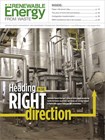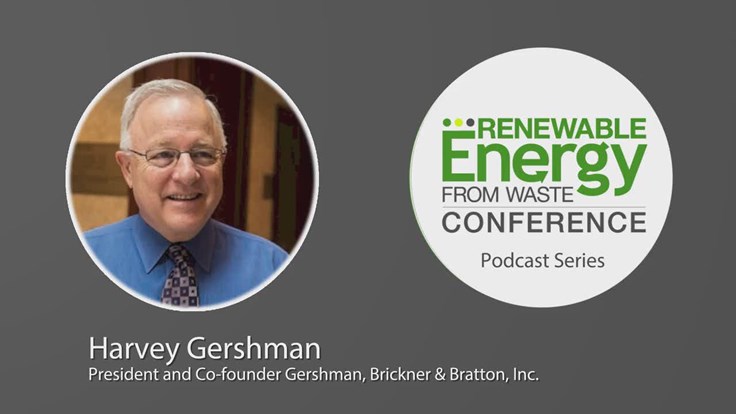Zero waste is a lofty goal that many companies and municipalities are striving toward. During WasteExpo 2016, held in Las Vegas in early June, panelists speaking during a keynote session titled “The Road to Zero Waste - Organics Diversion & Food Recovery Solutions in Action,” shared some practical approaches to what can often seem like an unachievable goal.
Eric Lombardi, executive director, Eco-Cycle International, Boulder, Colorado, said while many major corporations are achieving zero waste to landfill, his goal is to get communities on board with the goal.
He said communities need to stop making solid waste management plans. ‘It is time for zero waste management plans,” he told attendees, adding, “if you are not for zero waste how much are you for?”
People tend to panic when zero waste is brought up, he said, because they think you have to get to zero. He explained that just because a community can’t technically get to zero doesn’t mean they shouldn’t go for zero as a goal.
“We decided 90 percent was good enough. If you can get there, you can change business as usual,” said Lombardi. “You can change the world.”
He said once a city declares zero waste as a goal, it opens up dialogue between staff and businesses on what he calls “the pursuit of zero.”
Of his firm Eco-Cycle, he said, “We created a roadmap to demystify the process.” He described the roadmap the company developed as a ten-year strategy using working technology and known economics.
He said the strategy is all about the circular economy and keeping the resources at work. He says six facilities are required at a zero waste community including facilities for:
- traditional recycling;
- organics;
- construction debris;
- hard to recycle materials;
- reuse and repair; and
- whatever’s left.
The “whatever’s left” facility is what Lombardi described as MRBT which he said is a take on the European Model of mechanical biological treatment or MBT. MRBT stands for materials recovery biological treatment. This facility is for materials that have been recovered incorrectly.
He said a community can make a lot of progress in 10 to 15 years and he would like to see a zero-waste plan in every city and a zero-waste park at every landfill.
He concluded by saying, “We don’t’ have a waste problem, we have a resource opportunity.”
Evan Edgar, principal, Edgar and Associates, Sacramento, California, opened his presentation by saying, “What happens in California doesn’t stay in California.”
He discussed legislation in California, including Gov. Jerry Brown’s climate change pillars to reduce greenhouse gas (GHG) emissions to 40 percent below 1990 levels by 2030. The strategy for reduction includes:
- 50 percent renewable electricity;
- 50 percent reduction in petroleum use in vehicles;
- double energy efficiency savings at existing buildings;
- carbon sequestration in the land base;
- reduce short-lived climate pollutants; and
- safeguard California.
He estimates 8 million tons of organics need diverted by 2020 which translates to about 100 new facilities. These facilities would need to accept food waste, green waste, wood waste and compostable paper, he said.
Edgar discussed Assembly Bill 32, which requires California to reduce its GHG emissions to 1990 levels by 2020 — a reduction of approximately 15 percent below emissions expected under a “business as usual” scenario.
He also talked about the global warming potential of methane. It is 84 times more potent than carbon dioxide and the impacts, he said. Senate Bill 1383 targets methane with a goal of reducing the gas by 40 percent of 2013 levels by 2030. Edgar said dairies, landfills and forest fires are being targeted as a way to reduce emissions. He also mentioned how with anaerobic digestion, carbon-negative fuels are being created.
“California can actually increase our GDP (gross domestic product) by decreasing our carbon intensity,” he said, adding, “The road to zero waste is on this organic highway.”
Barnes Johnson, director of the office of resource conservation and recovery, U.S. Environmental Protection Agency (EPA), Washington, discussed some EPA-supported programs that are aimed at reducing food waste.
EPA estimates each year we throw away some $160 billion of food. “The economic cost is significant,” he noted.
He said the EPA’s Food Recovery Hierarchy, the agency put out in the 1990s is a great vehicle for talking about the food recovery issue as the country’s materials management evolved, the EPA started to look at life cycle impact.
“The food production system is an extremely impactful portion of that landscape,” said Johnson.
He also talked about EPA’s Food Recovery Challenge and its Food: Too Good to Waste Tool Kit as well as the U.S. government’s first food loss and waste reduction goal in 2015 which was to achieve a 50 percent reduction in food waste in the U.S. in 15 years by 2030.
WasteExpo 2016 was June 6-9, 2016, at the Las Vegas Convention Center.



